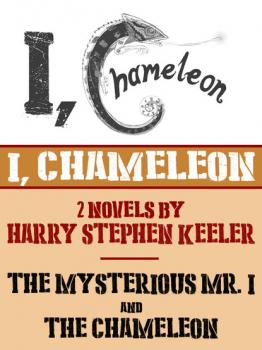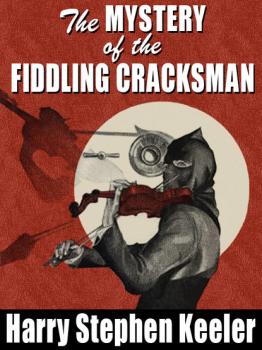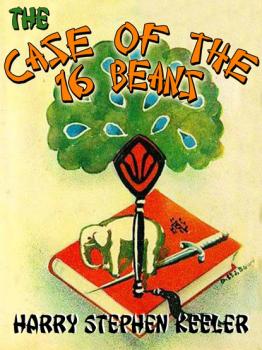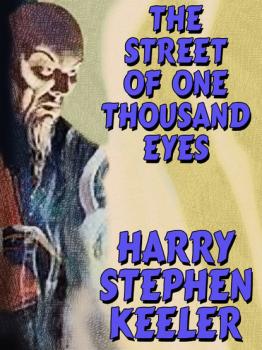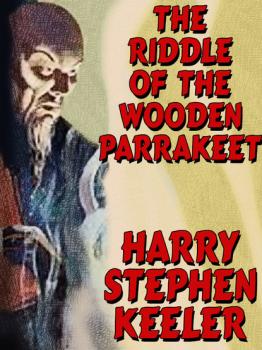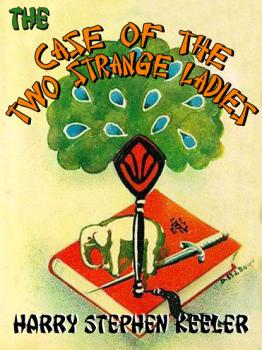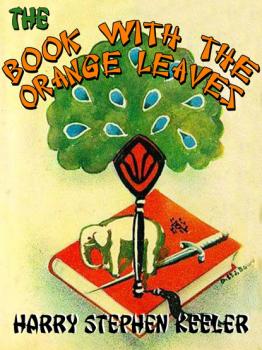Harry Stephen Keeler
Список книг автора Harry Stephen KeelerThe Straw Hat Murders
It’s tough being being Chief of Homicide when there have been four murders of piano students—all in the same studio apartment! So Huntoon Cambourne knows his job is on the line as he tries to prevent a fifth murder. He’s not lacking for clues because there is a cheap straw hat found at the scene of all four murders. And then there’s the matter of the killer leaving a $20 gold piece in the alms bucket of a deaf and blind mendicant down on the street near the apartment house. But how does the murderer get into the death room when the only opening is a trapdoor that’s only reachable by a dangerous 7-foot leap?
The Green Jade Hand
“Exhibition Extraordinary!” So began the poster advertising the professional debut of Simon Grundt, formerly of the Lincoln School for the Feeble-minded. How the police could choose Simon to solve the murder of Casimer Jech, rare bookdealer, is a tale only Harry Stephen Keeler could have chronicled. Before it’s done you’ll meet ex-con Luke McCracken, ’bo Tom Steever, landlady Sadie Hippolyte, inventor Dirk Mattox and his fiancée Iolanthe Silverthorne, and wealthy gad-about-town Oliver Oliver. Not to mention a host of celestials and a gaggle of cops—all of them affected one way or another by the six-fingered green jade hand. <P>A note for the politically correct: this book is decided not. Keep in mind the year in which it was written (1930). It reflects the times.
The Case of the Murdered Mathematician
Quiribus Brown, probably the only 7-and-a-half-foot-tall mathematical detective in the Midwest, has got to solve the mystery of who killed Professor Munstergale, or he’ll never get his rightful inheritance. Luckily, Munstergale lived long enough to draw on a blackboard two diagrams, one pointing to his killer, and the other pointing to where he knew the killer from. There are two theories, both involving prominent citizens as suspects, and Inspector Clarvoe’s job is depending on Quiribus’ deciding which theory—or neither—is correct.
I, Chameleon ("The Mysterious Mr. I" and "The Chameleon")
In 1936 Harry Stephen Keeler wrote a huge novel featuring the most unreliable narrator in literary history. His publishers forced him to split the books into two volumes, The Mysterious Mr. I and The Chameleon.Now, Ramble House has put the two novels together in one volume so you can read the whole story without changing books. Together, they are one of the most unusual books ever written.
The Mystery of the Fiddling Cracksman
Wild, fantastic, yet overwhelmingly logical, this yarn could come only from Chicago's own Sherlock Holmes and that favorite of American mystery fans, Harry Stephen Keeler. Here he gives us a brand-new webwork of mysteries – a cracksman who uses not dynamite, but a violin; a second-hand safe with amazing secrets inside; a volcanic island in the Pacific; a fantastic kingdom in Europe; and a pair of lovers caught in the very center of this whirlwind of danger and detection. As usual, this breathless yarn is filled with facts and incidents undreamed of in the usual mystery story. Keeler fans will find it a special treat. <P> "My guiltiest pleasure is Harry Stephen Keeler. He may been the greatest bad writer America has ever produced. Or perhaps the worst great writer. I do not know. There are few faults you can accuse him of that he is not guilty of. But I love him." – Neil Gaiman<P>
The Case of the 16 Beans
“Beans to YOU, sonnyboy, as per my will!”<P> So read the wishes of rich old Balhatchet Barkstone, uncle of young Boyce. Why would he deny Boyce his proper inheritance by leaving him a paltry 16 beans instead of millions of dollars? Could it have been a big mistake? Or an imagined insult? Only Harry Stephen Keeler could have concocted such a plot<P> A note to the sensitive: As with many novels written in the first half of the 20th century, this book contains elements which may be viewed as racist today. Please keep in mind the era in which it was first published.
The Street of One Thousand Eyes (Hong Lei Chung #2)
Joseph Fairweather languishes in a mental institution because he has a theory about time and space that’s just plain crazy. Across the ocean in an abandoned warehouse by the River Thames, Eadgyth Whitchurch lies bound hand and foot, soon to be thrown into the river by the London branch of the Tong of the Lean Grey Rats That Swarm the World, just because she overheard a phone conversation she shouldn’t have. Meanwhile, back in the States there’s a slab of ancient stone that seems to disappear and reappear according to some laws of nature we know nothing about. What’s going on here?
The Riddle of the Wooden Parrakeet
The condemned man asked for three things before he climbed the thirteen steps to the gallows: a glass eye, a champagne cork and a wooden parrakeet. Can any mystery writer—other than Chicago paper blackener Harry Stephen Keeler—have proposed such a scenario? And then written a huge meganovel filled with celestials and tong lore to explain why the condemned man should make such a request?
The Case of the Two Strange Ladies (Way Out #4)
It's tough being a damn'd Yankee reporter in Southern City, but life just gets worse when the nude bodies of two women – one white, one black – are found dead in Cattail Swamp with their heads cut off and swapped. Of course the only way to identify them is to have the bodies on display so every person in Southern City can see them. With such an organized ritual, how can ace reporter Tommy Skirmont ever hope to solve the mystery and keep his job?
The Book with the Orange Leaves (Way Out #3)
What kind of book would be printed on orange leaves? It could only be the one book that contains all of the wisdom of the ancient Chinese, as told in hundreds of aphorisms —The Way Out. Featured in a half dozen webwork mysteries by Harry Stephen Keeler, The Way Out is the only thing keeping one-handed Stefan Czeszcziczki’s wife alive as she awaits an operation. How “Zicky” uses its wisdom to save her life is a tale only America’s most forgotten author could have written.



